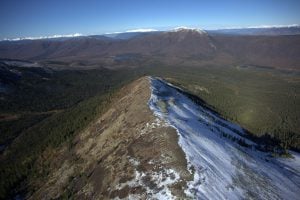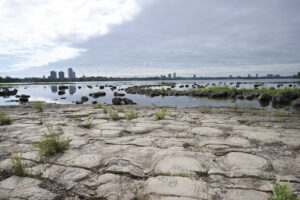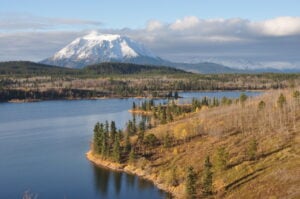The side of a piece of shale after splitting, with an insect preserved on the side. (Bruce Archibald)
Palms were the perfect example to focus on because they cannot form a freely reproducing community where the coldest temperature is below 5 C. The palms in Vancouver today, for example, are imported plants.
But during the Eocene Epoch, the world was a globally warmer place and there were elevated greenhouse gas levels in the atmosphere. Under these conditions, the frost sensitivities of these plants increased from 5 C to 8 C, and by establishing palms in the region, a baseline for winter temperatures was established as well.
Archibald says the difficulty was finding fossils of the palms because many of the fossil beds in the area are lake bed sites, meaning the leaves would have needed to fall into the mud of the lake to be fossilized. But with these types of palms, the leaves don’t fall off the trees — they hang onto the trunk like a skirt.
A new technique was implemented to find proof of the palms’ existence, which is where the beetles come in. Since finding palm fossils was difficult, researchers looked for beetle fossils, since evidence of the beetles’ presence would be undeniable evidence of palm presence.
Fortunately, the research team was successful in finding beetle fossils in several different sites. “We used the beetles as proxy thermometers to establish this climate type,” Archibald says.
He adds that this climate type is similar to what Canadians are experiencing now and will experience in the short-term future. It can help show how natural communities are affected by the change.





